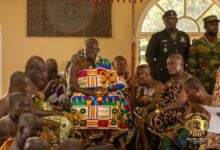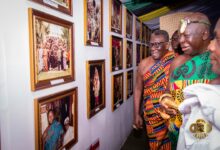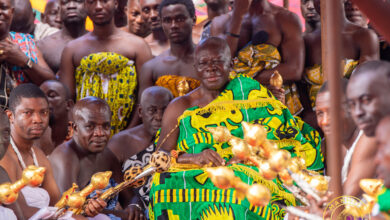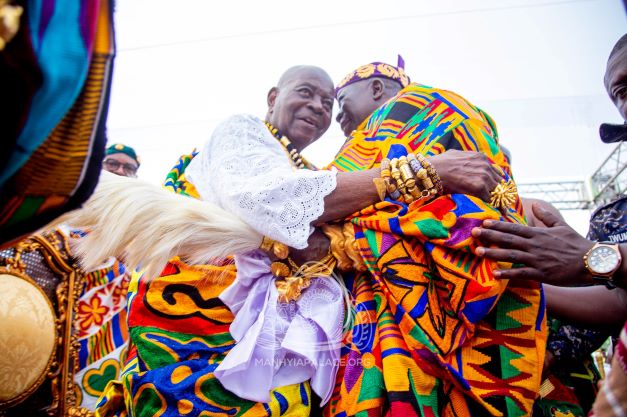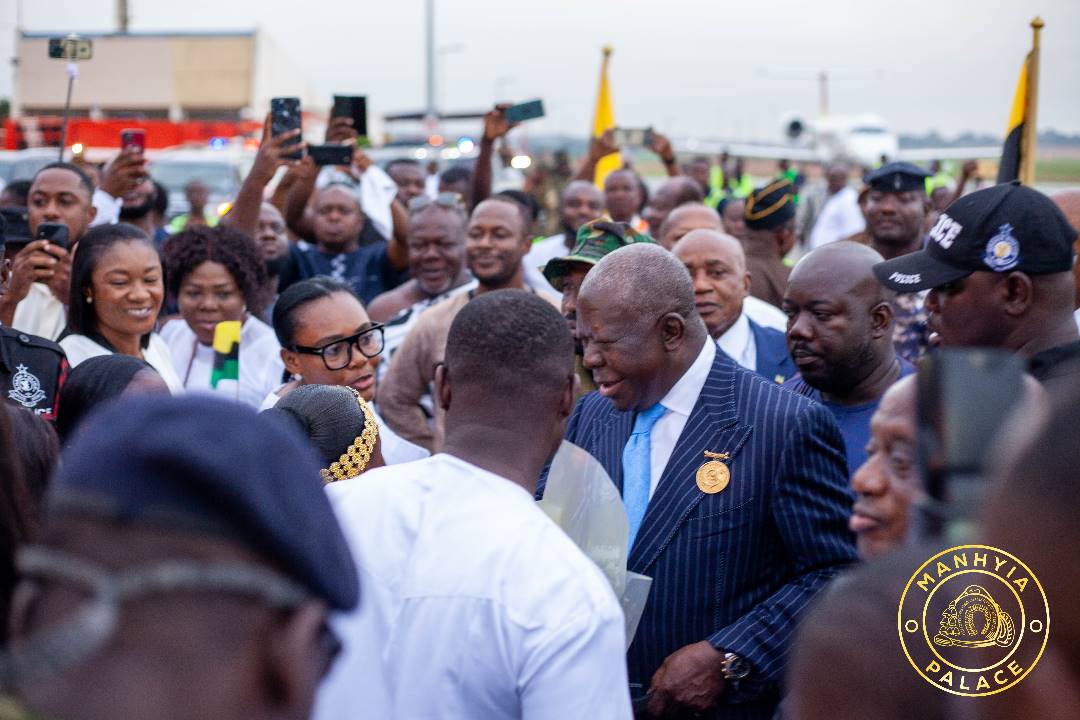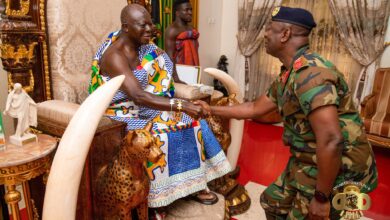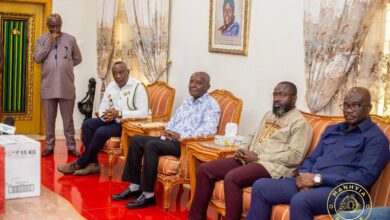Asantehene Proud Of Kofi Nti After Visit To Fort George In Trinidad
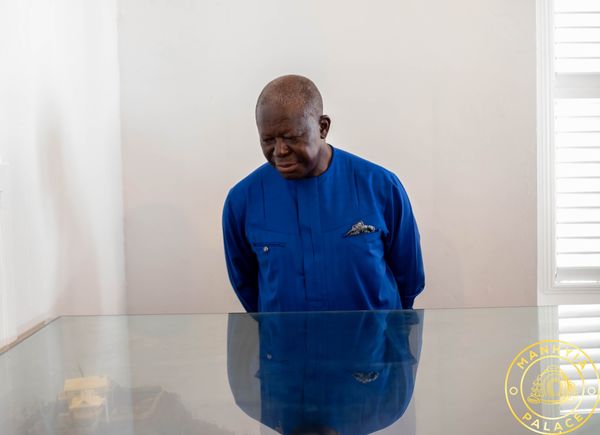
His Majesty Otumfuo Osei Tutu II has expressed his pride in the life-long legacy left behind in St James in the region of Diego Martin in Trinidad by a native of the Asante Kingdom, Kofi Nti who was later known as William Kofi Nti.
The legacy lies in a signal station standing in Fort George.
The King of the Asante Kingdom visited the place on Wednesday, August 2, 2023, together with some chiefs from his kingdom including Nana Otuo Siriboe II, Juabenmanhene and Chairman of the Council of State, Nana Amoa Aturu Nkonkonkyea II, Japekromanhene, Amb. Nana Effah-Apenteng, Bompatamanhene and Nana Adusei Atwenewah Ampem, Tepamanhene.
Also present were, Barima Twereku-Ampem, Ntotrosomanhene, Nana Kusi Agyekum Ababio, Oyokohene, Nana Akyena Kwaman Nuama V –Esuowinhene, and a host of Divisional Chiefs and Linguists.

They were taken to the signal station by Senator the Honourable Randall Mitchell, the country’s Minister of Tourism, Culture and the Arts and some officials of the National Trust of Trinidad and Tobago.
Fort George and The Signal Station
Fort George formerly known as La Vigie, according to the Trinidad and Tobago’s National Trust- which is responsible for safeguarding the natural and tangible heritage of the country- was constructed in 1804 under the direction of British Governor, Brigadier-General Sir Thomas Hislop by 750 enslaved individuals ahead of emancipation.
It wasn’t until 80 years later that Kofi Nti- son of King Karikari, the 10th King of the Asante Kingdom who had been taken together with his brother from their father as part of conditions of a Treaty in 1874 to be given “formal” education in Britain- was sent to Trinidad following the death of his brother from Tuberculosis.
In Trinidad, history has it that he worked closely with the British army and Governor at the time and emerged as a very notable figure in Fort George’s history by designing and constructing a signal station in 1883.
“Today, Fort George stands as an important historical landmark and a viewpoint that offers insight into our past. It symbolizes the shared history of enslaved Africans and the contributions of individuals like Prince Kofi Nti whose legacy continues to resonate,” a representative of National Trust said.

In a presentation, Senator Honourable Randall Mitchell, the country’s Minister for Tourism, Culture and Arts said the Fort represents a “timeless emblem of our nation’s past and holds a special place in our nation’s past and holds a special place in our heart and minds” and quickly added that the signal station “adds a profound layer of significance” to the Fort.
“For it {the Fort} bears witness to the inter-woven threats of history that have shaped the cultural tapestry of Trinidad and Tobago. Originally built under British rule, the Fort served as a strategic vantage point to safeguard our beloved islands from potential threats and incursions. But it is the signal station constructed by Prince Kofi Nti of Ashanti that adds a profound layer of significance to this iconic landmark.”
He told the King and his delegation, “Travelers in search of authentic cultural encounters find solace within the walls of Fort George as they learn about the astonishing tale of Prince Kofi Nti, a man whose journey from West Africa to our shores left an indelible mark on our collective identity. This exemplifies the resilience, determination and ingenuity that runs through the veins of our nation. His contribution to the island of Trinidad and more particularly to the construction of the signal station reflects the lasting legacy of African heritage and traditions that have become an inseparable part of our life.”
A Proud Father
Standing before the signal station and hearing the tale that accompanies it, the visibly proud King expressed his gladness and pride in Kofi Nti who is customarily his son as the current occupant of the Golden Stool.
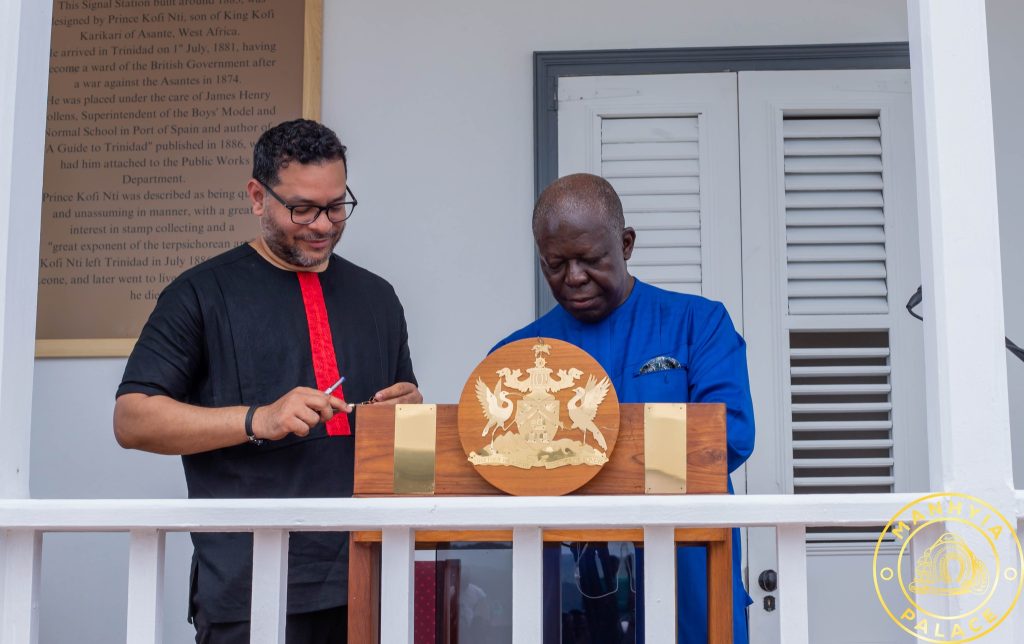
“This edifice I see here he came to design and construct…To me, it is gladdening for me to here to see this edifice from 1883 and for me now as the occupant of the Golden stool standing here, looking at this edifice and proudly hearing that my son designed and built it.”
With this, he reaffirmed that the legacy of Kofi Nti and the Asante Kingdom will stand forever with Trinidad and Tobago.


